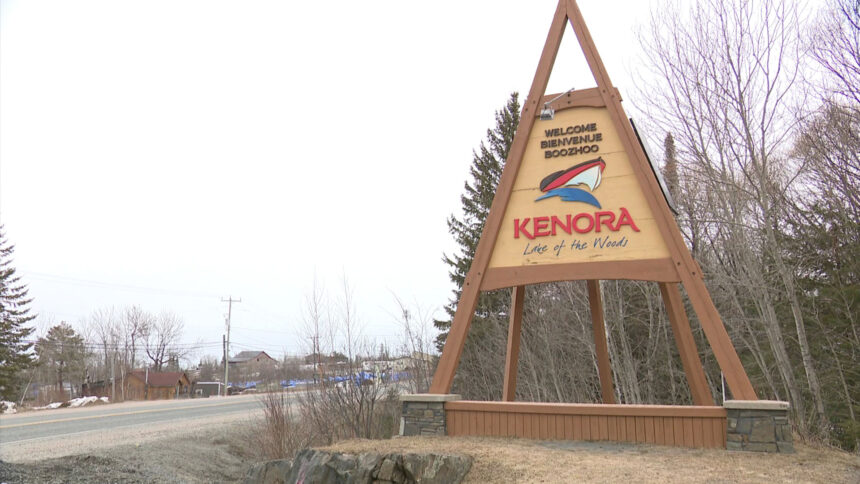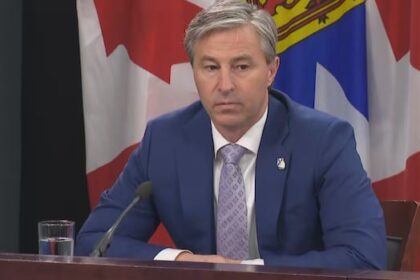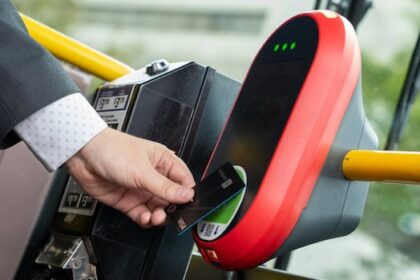The riding of Kenora-Kiiwetinoog is one of the largest in terms of land mass in the country, about a third of the entire province of Ontario. It’s also considered a swing riding by the Assembly of First Nations, meaning that because of the population, First Nations voters could sway who is sitting in the next Parliament. This is the third federal election that Tania Cameron is running in as an NDP candidate. She ran in 2008 and again in 2011. Then she decided to work for Elections Canada, also helping to “Rock the Indigenous Vote” in 2015, and stayed working for them until now. When APTN News caught up to her, Cameron is campaigning in Shoal Lake 39, one of 38 First Nations in the riding – and of those – about half are fly in only. “Thirty-five will have polling stations I hope. There’s a lot of issues when it comes to trying to represent not only the first nation needs that currently exist but also in the towns and municipalities that have infrastructure needs they need improved access of funding to health care, education and of course that’s federal transfer funding right,” she tells APTN. In the 2021 election, 57 per cent of eligible voters came out to vote. But Cameron said that number could have been higher. That election year, Cameron wrote a five page letter to Elections Canada saying voter suppression was happening in her riding. She wrote about a breakdown between First Nations communities and the local returning officer. Cameron said some of the fly-in reserves did not have polls and four weren’t sent enough ballots and had to close the doors early. “I just went out and said it was voter suppression tactics. Like how dare you take someone’s right to vote away. Especially as First Nations, we only got the right to vote in 1960. “While there are some First Nations people that choose, I totally respect that right. But for those that choose and don’t have access that was very disappointing,” she said. The AFN considers it a potential “swing riding” because of the 62,000 people who live here, just over half identify as Indigenous. A third of that population lives around Kenora. “I was looking at my odometer and I am just over 2,600 kilometres of driving and 52 hours of drive time because this riding is so huge,” she said. “It goes down to Nestor Falls, Onigaming First Nation up the Manitoba border all the way to Fort Severn and then comes down to Ignace and back here. I haven’t even got to Ear Falls, Red Lake, Sioux Lookout, Pickle Lake but that’s on my list for next week.” Five other candidates are running for the same seat – two are First Nations men who are also from northern Ontario. Liberal Charles Fox is a former Nishnabe Aski Nation leader, and Independent Kelvin Boucher-Chicago, who has run twice here. In Kenora – there’s not a Liberal sign or riding headquarters in site. Fox also did not respond to APTN’s request for an interview. Eric Melillo, the Conservative incumbent, also did not make himself available to speak to us. The other two candidates include Bryce Desjarlais for the People’s Party of Canada and Jon Hobbs for the Green Party, While Hobbs admits the Greens are “not going to form government,” he said his party aligns with First Nations values as both “protect Mother Earth.” Now retired, Hobbs was once the CEO of the Royal Architectual Institute of Canada, often working on housing, medical institutions and restoration in southern Ontario. He said there is already a foundation in place for building a better relationship between Canada and Indigenous Peoples. “I’m an architect and we gave our greatest medal the gold medal, to Murray Sinclair for the Truth and Reconciliation Commission,” he said, “And we really should finish the recommendations in his honour to see those through. some are done but there is a lot more to do.” Beyond that, Hobbs said there are some immediate needs in the riding. “Housing is always an issue; drugs is an issue,” he said. “I don’t have the answer to that but we have got to work together. Urban cities, everywhere to fight that.” Boucher-Chicago said he’s focussing his campaign on the community’s most vulnerable – relaying on his own personal experiences. “I know all the ins and outs of what these people are going through,” he said. “My dad died out here. He was out here for 45 years. I have a daughter that’s out here she’s been out here for I don’t know how long and I have many relatives and have seen many of them pass away.” Read More: Decision 2025 Bologna sandwiches, beaded earings and bannock: 3 Indigenous women hit the campaign trail Boucher-Chicago said he’s choosing to be independent because most of the major parties have laws he can’t support. “I like to use my good friend John Rafferty, he was from Thunder Bay in 2007, I can’t remember the exact dates but he opposed the gun law registration and for opposing the gun law registration he was put in the corner and that ended his political career,” said Boucher-Chicago. Since the riding was created more than two decades ago, it has changed back and forth from Conservative to Liberal, with the Conservatives taking the riding the last three elections. Both First Nations candidates, Cameron and Boucher-Chicago know they are up for a challenge. Especially considering many of the communities they are relying on, they are having trouble getting into them. “I would like to fly out to the northern fly in First Nations but when we costed it out we are looking at about 42 thousand dollars,” said Cameron saying that should go to show that accessibility is a big challenge that citizens in the Kenora Kiiwetinoong riding face in their own daily lives. Her competitor, Boucher-Chicago is in the same situation. “I’m the little guy at the bottom of the food chain,” he said to APTN. Boucher-Chicago hopes to go to Sioux Lookout and Red Lake and canvass those towns and the First Nations around them, then where he can’t go, he’s relying on phoning communities and social media. “Can you imagine trying to fly to all those places, I don’t have a budget like any of the major parties. I basically have just enough to do flyers and signs.” Continue Reading
Candidates in northern Ontario look to appeal to First Nations voters

Leave a Comment








